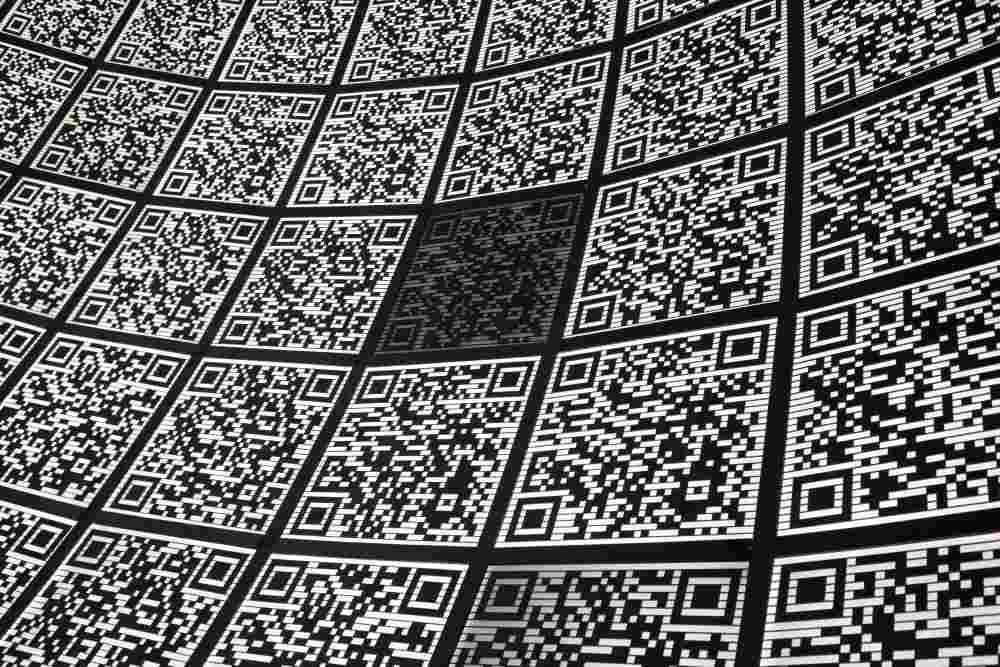There are two types of QR codes, namely:
1. Static QR Code
This is a one-time generated QR code and stores information for one-off campaigns. It has an embedded URL with a fixed redirect and thus cannot be edited. You can generate different static QR codes, including:
To send an email by scanning this code, you only need to set a recipient email address and type the mail.
You can easily provide your contact details by filling in the necessary contact details and linking them to this QR code.
Business owners can use this QR code on brochures, billboards, flyers, etc., to lead customers to their website and improve brand awareness.
With this, the Wifi credentials will automatically get saved on the customer’s device, easing the process.
It displays text messages, serial numbers or coupon codes.
This QR code includes a contact number and a pre-written text message. On scanning it, you will be directly redirected to the SMS.
2. Dynamic QR Code
This functional QR code has the flexibility to be edited even after generating. It helps to track QR scans, schedule campaigns, and retarget users online. You can use the Dynamic QR code for the followings:
Instead of preparing several menu cards for different meals, you can provide all details through this QR code.
This can be used to keep your consumers updated regarding the packing of a product with a video.
Business owners can use dynamic QR codes for faster scans, real-time asset tracking, optimum inventory accuracy and more.
Many universities use dynamic QR codes to recommend books and share videos in a rotatable way.
This QR code helps companies maintain transparency with the consumers regarding product-specific details, such as ingredients, retailer’s license status, etc.
Top realtors can display available properties, share contact details, and provide virtual tours via a dynamic QR code.
1. QR Code Model 1 & 2
These are regular QR codes widely used in shops, restaurants, and magazines for business expansion. However, the Model 1 QR codes are outdated as they have a maximum size of 73X73 modules and a storage capacity of 1,167 numerals. On the contrary, the prevalent Model 2 QR codes have a size of 177X177 modules and a storage capacity of 7,089 numerals.
They comprise common codes to encode data for vCards or electronic business cards, Portable Document Formats or PDFs, Google Maps location, Uniform Resource Locators or URLs, images and more.
2. Micro QR Code
Micro QR code has a unique feature of one position detection pattern located at the three corners of the symbol. Further, unlike regular QR codes, a two-module wide margin configuration is sufficient for Micro QR codes, enabling smaller printing areas than regular codes. They are categorised into four variants- M1, M2, M3 and M4 based on the maximum amount of data encoding capacity.
As it handles only 35 numerals, you can use them for websites, product tagging, business cards and more.
3. iQR Code
An iQR code is a 2D matrix code with 80% higher data capacity than traditional codes. It can store up to 40,000 numerals on a grid of 422X422. Moreover, the error correction for this QR code is up to 50%; it is scannable even after damage.
As can be with square and rectangular modules, it is used to overwrite a space near a barcode or on any cylindrical products.
4. SQRC Code
SQRC code features data reading restrictions and consists of public and private sections. It is generated to carry two types of information with different control levels. Further, it maintains the characteristics and appearance of the traditional QR codes and retains the error correction.
SQRC codes can be used for maintaining a company’s internal and confidential data.
5. FrameQR Code
This type of QR code exhibits a central area known as the QR code frame for holding an image. The frame can also be a blank white space of various shapes.
It can be used for authenticity judgement, business or product promotion, etc.
6. HCC2D Code
HCC2D, or the High Capacity Colored 2-Dimensional barcode, comes with a symbol structure with grids of coloured squares built upon a QR code. It uses colours to increase data density and manage chromatic distortions efficiently. In addition, you will find an additional field on the HCC2C code known as the Colour Palette Pattern.
It is under the prototyping stage and proposed to preserve QR robustness to distortions.
With the rapid increase in popularity, irrespective of types of QR codes, security concerns hold back their uptakes. Businesses can set up a framework to track contacts with a closed ecosystem that allows scanning and tracing QR codes.














